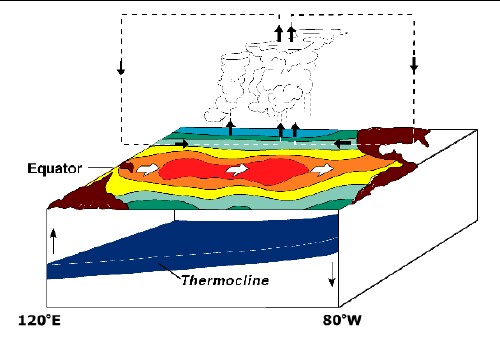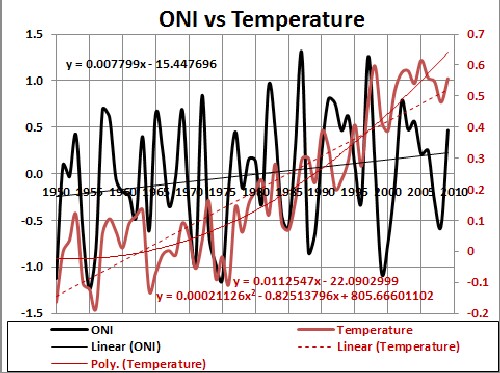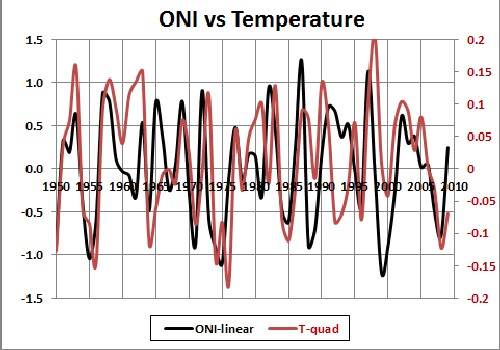El Niño:

"Warm water pool approaches South American coast. Absence of cold upwelling increases warming."
L. David Roper
http://www.roperld.com/personal/roperldavid.htm
6 April, 2016
The oceanic Niño index (INO) is a measure of the El Niño/La Niña-Southern Oscillation (ENSO).
El Niño: |
This article examines whether there is a relationship between the INO and global warming, i.e., increasing average Earth temperature. The answer is Yes.
Data for the average Earth temperature and the INO are readily availble. The following graph show them on separate Y axes and trend fits to them:

There is not much difference between the linear trend and the quadratic trend for the ONI, but there is a large difference between the linear and quadratic trends for the temperature.
The correlation coefficient between the temperature and the ONI is 0.35; the correlation coefficient between the value minus the quadratic trend for the temperature and the value minus the linear trend for ONI is 0.46. That is, the two sets of data minus the two trends are fairly highly correlated, as is visually obvious in the following graph, which shows the two sets of data minus the trends:

It appears reasonable that the linear trend of the ONI is partially caused by global warming and the variation in the average Earth temperature is partially caused by the ONI; i.e., Earth average temperature and ONI form a mutual feedback system. Of course, there are other variables that contribute to the system.
L. David Roper interdisciplinary studies
Roper Global Warming
L. David Roper, http://www.roperld.com/personal/roperldavid.htm
6 April, 2016
c:/science/meteorology/tornados.xlsx